In order to do EDI interchange, you will first need to define your organization’s AS2 identifiers. These identifiers validate the EDI message being sent and received by the correct parties. This article will focus on configuring the organization and trading partners using the ANSI X12 EDI standard. Unfortunately, it can be quite overwhelming the first time you try to do this configuration. We will review the main setup for the Trading Partner component in this article to hopefully answer some of those questions.
Boomi Trading Partner Setup: Create Your AS2 EDI Organization
First, we need to define our organization’s AS2 identifiers. These identifiers route and validate the EDI data from the Boomi AS2 server. You can use any identifier you want, but it has to be without spaces or special characters. Most organizations will use their company name minus any spaces. The primary identifier fields that an organization needs to configure are listed below.
AS2 Identifiers
The AS2 identifiers indicate the EDI data’s sender and receiver.
- AS2 ID: This is your primary AS2 ID that will be used to validate and route the EDI data to your Boomi runtime. Usually, this is your organization’s name.
- AS2 URL (https) / Send URL: This is the public URL you have set up to receive EDI data via the Boomi AS2 server (i.e., https://edi.xtivia.com/as2). See our other blog post, Boomi AS2 EDI Server Networking, for more information regarding this setup.
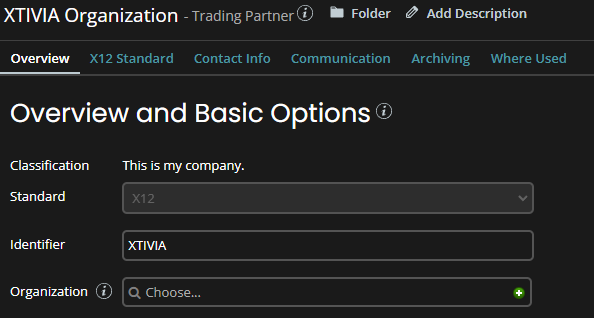

EDI Header Identifiers
The EDI headers are part of the EDI message and are used to validate the EDI data sender ID as well as help to differentiate between test and production systems. An example is you can use XTIVIA as the production identifier, but XTIVIAT for the test system.
- ISA Qualifier (ISA05): The ISA qualifier indicates what type of information will be contained in the ISA06 segment as the sender/receiver information. EDI standards allow for this to be anything from a DUNS number to your company’s telephone number. You can also use the ZZ qualifier (mutually defined) if it’s not something already defined within the EDI standard you are working with.
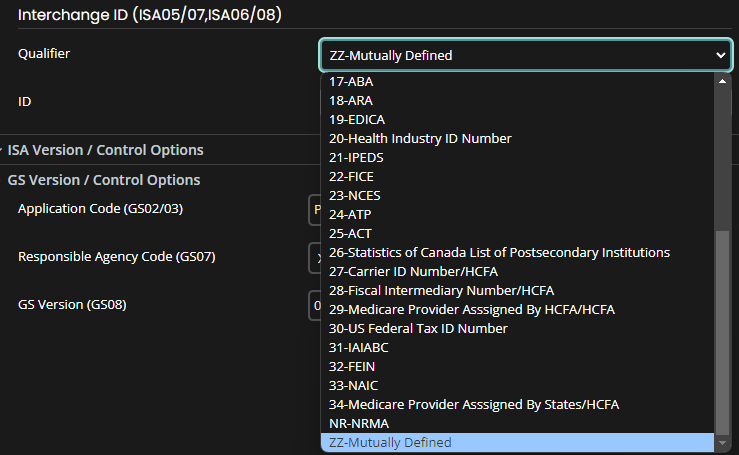
- ISA ID (ISA06): Your organization’s identifier value. In this example, it is the company’s name.
- GS ID (GS02/03): The second part of the EDI header that also requires an identifier. You can use the same one as the ISA header or put a different value here.
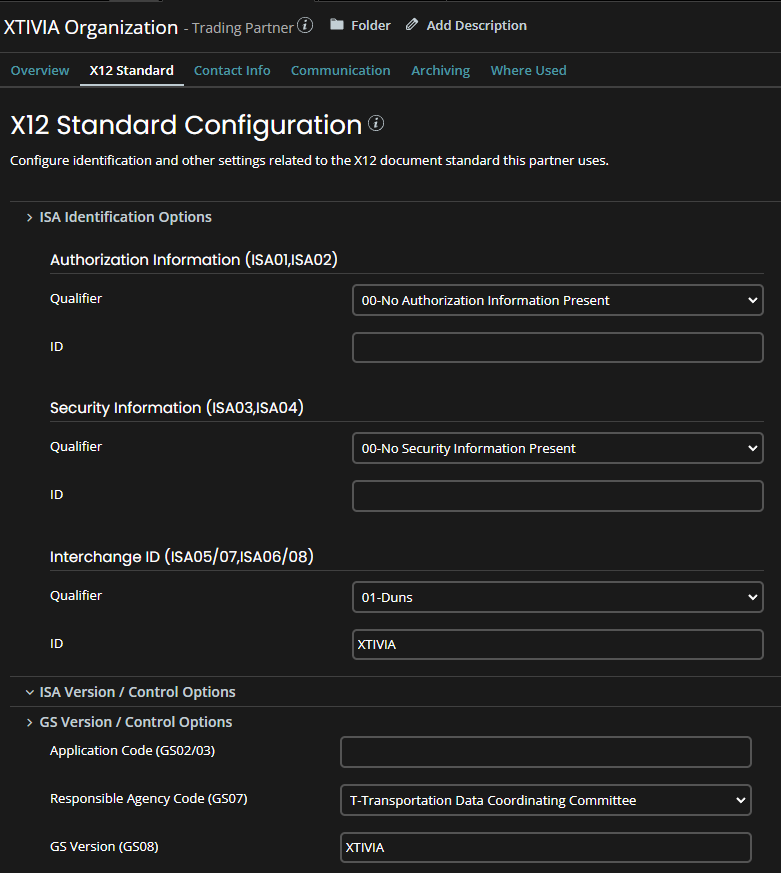
AS2 Encryption Settings
AS2 communication encrypts the EDI message as part of its standard protocol. This requires a signed X.509 certificate. While a self-signed certificate would work, most big EDI providers and interconnects will only accept a signed certificate from a certificate authority. You will import that certificate into Boomi and use that as your encryption and signing certificate for your EDI message. You will need to share the public part of this certificate with your Trading Partner so that they can encrypt the EDI message with it before sending it to your organization. You will also define the encryption protocol that needs to be used. All this information must be communicated to your Trading Partner so they can properly configure the decryption routine on their side to be able to read your EDI data.
Check out our blog post, Boomi EDI Tips & Tricks, for recommendations on how you can do this easily.
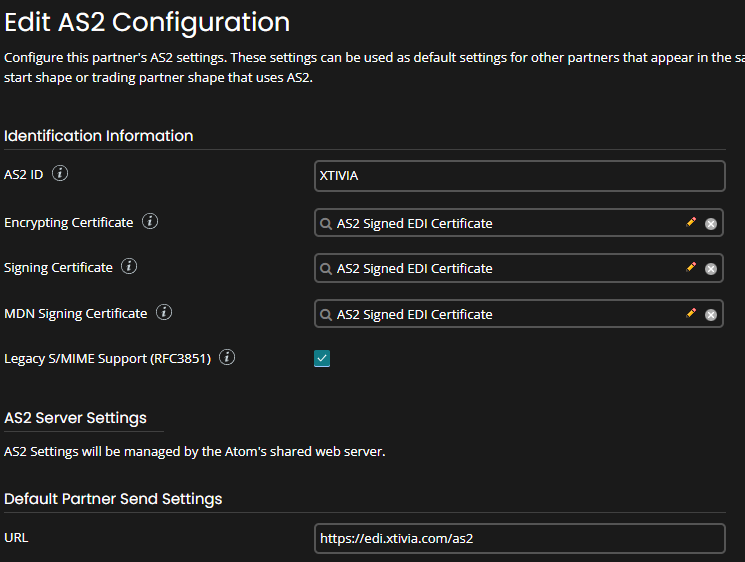
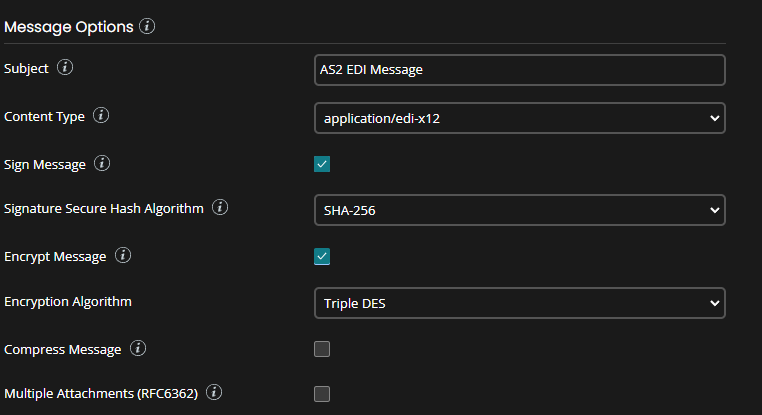
AS2 Message Disposition Notification Settings
Boomi will auto-generate MDN and request MDN for any AS2 messages sent or received. You can configure it if you want the MDN to be generated and sent back right away when the AS2 message is received, or done Asynchronously as part of the 997 transmission. The MDN can also be encrypted and signed using the commonly used set of encryption routines already configured within Boomi.

While there are many other configurations needed, these are the main critical components.
Boomi Trading Partner Setup: Create Your Trading Partner
Creating a Trading Partner follows all the same steps outlined above for creating your organization. There are two minor differences.
997 Generation Settings
In order to generate 997’s to be sent back to the Trading Partner, you will need to configure the Functional Acknowledgement Options section.
- Do Not Acknowledge – This option means you will not send back a 997.
- Acknowledge Functional Groups – This means you will send back one 997 per functional grouping. A functional group is a grouping containing multiple transactions. For example, an EDI 850 (Purchase Order) can contain multiple orders within it. If you pick this option, you will generate one 997 for the entire group of purchase orders.
- Acknowledge Transaction Sets – This means you will send back one 997 per transaction. Using our EDI 850 example, we would send back one 997 for each purchase order in the EDI message.
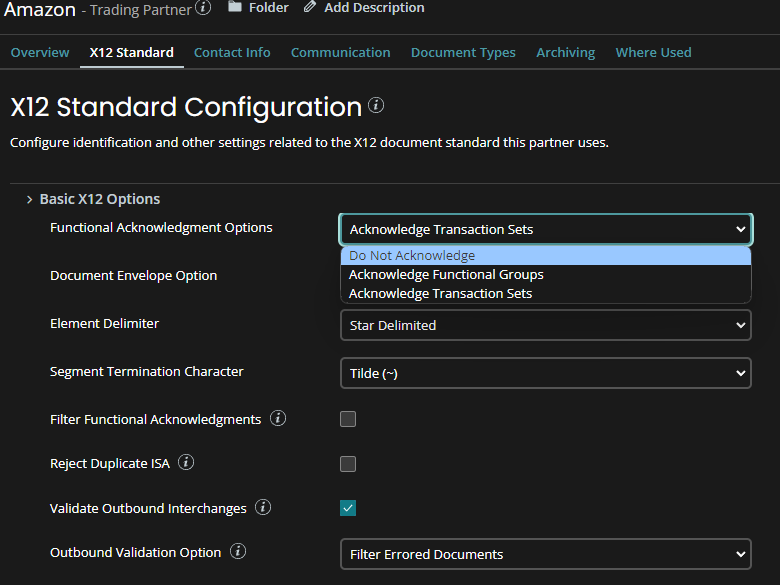
Trading Partner AS2 Certificate
Unlike the AS2 certificate we created for our organization, the AS2 certificate for the Trading Partner is a public certificate shared by the TP. This cert is used to encrypt the EDI message before sending it to the Trading Partner. They are imported the same way, but it is important to understand how the encryption and decryption work in the AS2 messaging protocol as it relates to these certificates.
Wrapup: Boomi Trading Partner Setup
AS2 communication and setup within Boomi can be a very daunting task for organizations that are not well-versed in Boomi and AS2 messaging. XTIVIA is available to answer and help guide your organization through this setup and implementation.
Please get in touch with us to learn how we can help with your Boomi EDI implementation as your Boomi partner, and be sure to check out our other Boomi EDI articles that will help you on your Boomi EDI journey.
Please check out our other blog posts for more information about Boomi EDI implementation.

